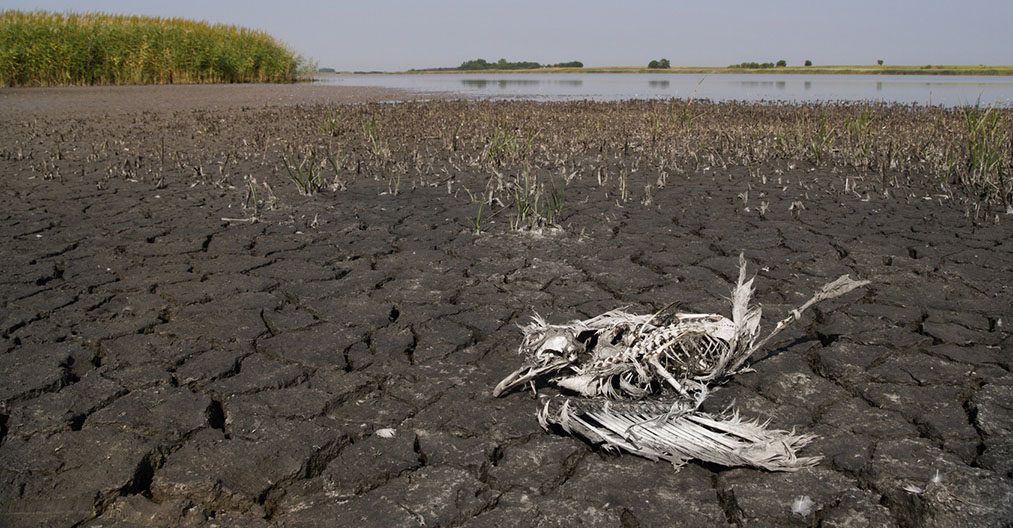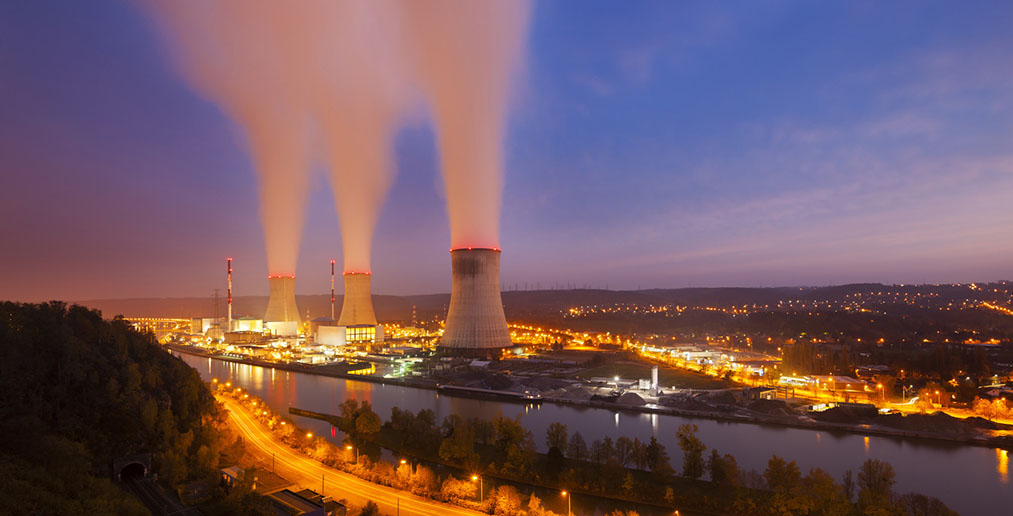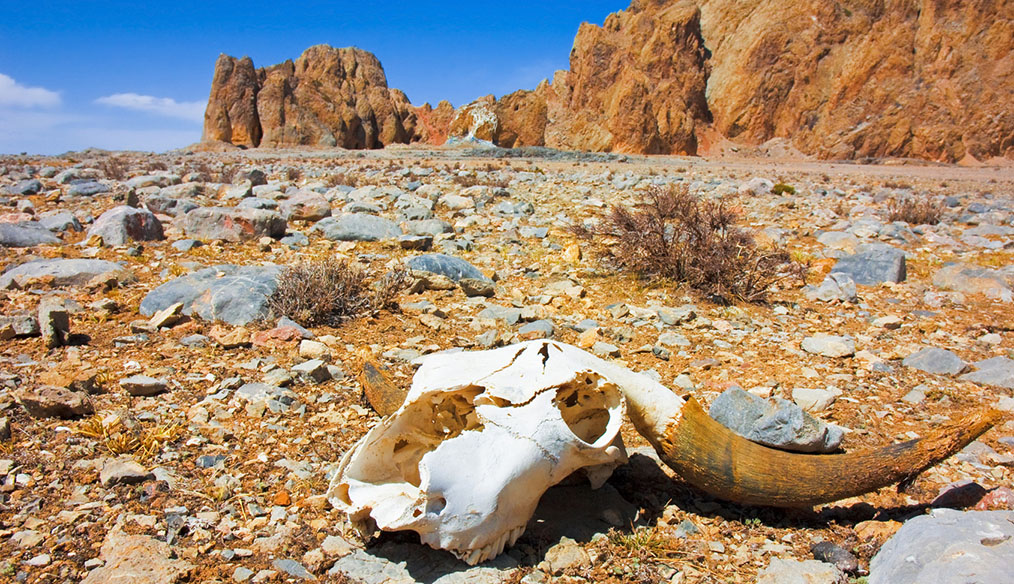Time is running out in many places.
Thanks to their outstanding mental capacities, humans were able to conquer much of the Earth’s surface and impose their will on conspecifics and other creatures. The decisive prerequisite for this ongoing campaign of conquest was the human ability to instrumentalize all things and thoughts. It allowed for the development of weapons, tools and social structures in a complexity that far surpasses anything known in the animal kingdom and the rest of nature. This ability was indispensable for the emergence of all technologies, cultures, religions, politics, sciences and the arts, as well as the economy. It drives human society into an ever-less-predictable future because of a staggering multiplication of possibilities and the increasing speed of developments. The great talent for instrumentalization is both a gift and a curse for humanity. Because of its fundamental role in human evolution, it is also responsible for all the downsides, including the most worrying megatrends of society. Some of these megatrends have now reached levels that exceed the bounds of ecological as well as social compatibility and endanger a large portion of all living things, including humans. These megatrends include, above all, the ongoing increase in the world’s population, its exploding consumer habits and mobility, its depletion of valuable resources, its potential for technological destructions, globalization, the unequal distribution of wealth and the escalating debts closely associated with it. The curse of the human ability for instrumentalization could prove to be fatal for humanity as soon as it gets out of control when exploiting other people without limits. The first visible signs of the instrumentalization of people are their continuous reduction to obedient workers, easily influenced consumers and useful voters, who are constantly misled by electoral promises which mostly have no validity. With the current expansion of artificial intelligence and uncontroled genetic engineering to humans, their instrumentalization will skyrocket most certainly. The instrumentalization of humans by reckless fellows could very soon have a catastrophic impact on them, as was the case for other instrumentalized creatures.
The chances that humanity survives unscathed through their hellish voyage driven by greed for power, lust, profits and consumer goods are dwindling rapidly. For to this day, many people apply the law of the strong as ruthlessly as did our most primitive ancestors, but with a much wider range of different, sometimes subtle means and with much greater impact. For a long time, the consequences of most attacks on other creatures and communities were kept within relatively narrow limits. Only demographic and technical developments from recent times have allowed the attacks by humans extremely outcrop. More than two hundred thousand years passed before people were able, with the help of murderous technologies, to nearly eradicate even large ethnic groups and destroy their own habitats with many other creatures living therein.
Within only a few generations, the rapidly spreading humanity may have halved the global biodiversity, which took about four billion years to develop! Most extinctions of species have occurred in recent decades and the exponential acceleration of this evolutionary clear-cut continues unhindered in the direction towards the maximum credible accident. Meanwhile, the ruthlessness of authoritative leaders and role models of the supposedly most intelligent species on Earth threatens to destroy systematically their entire habitat together with countless other species living there.

In this context, the American psychologist Doug McKenzie-Mohr already wrote in 2000 of a beginning “ecological holocaust” (1). In fact, the survival of so many species of animals and plants has never been threatened as much by humans as it is now. Also, never have so many animals been unnecessarily tortured by humans, as in today’s supposedly civilized society. At no time have the proliferating and ever-expanding humans damaged their environment as much as today. All this despite the fact that billions of working hours and enormous funds have gone into the protection of suffering animals, endangered species, threatened natural habitats and the environment in recent decades. Equally sobering are the balance sheets for the protection of needy children, the poor, the sick and the elderly, or the persecuted and the endangered indigenous populations. The scant successes in the protection of various beleaguered creatures cry out for an urgent change of strategies. Unfortunately, many of the resources used to protect people, representatives of other species and the natural environment were not effective enough. Obviously, completely new approaches, procedures and structures are needed to solve the biggest problems of humanity and to heal our society from life-threatening diseases of civilization. Because the responsible institutions and structures are unfortunately not willing or unable to stop, and even more to reverse the many fatal trends in time.
Environmental problems create social problems!
For some time now, forest clearings of huge proportions and other nature lootings have been rampant in many countries. Pollutions of waters, air and soils, as well as other environmental problems increased worldwide. This was followed by regional climate changes with heaped temperature extremes, hurricanes, droughts and floods. All of these phenomena can cause poverty, hunger, lack of drinking water, as well as diseases and poisoning of people and other living beings affected by these. In extreme cases, they cause armed conflicts, triggered by a shortage of vital resources. Nevertheless, many people still do not want to realize that they, too, are part of interconnected communities of living beings and very complex systems in a common biosphere and are fatefully depending on them. Other individuals just don´t care, as long as they are not affected themselves by the negative consequences. Therefore, severe exploitations and destructions of the environment can continue unhindered in poor regions of the world, while such massive interventions are increasingly taboo in northern industrialized nations, thanks to the growing, although very self-interested, environmental awareness encountered there. The reality exposes the selfish behavior of most citizens of rich industrialized countries at the expense of poor nations, of most of their people and other living beings, which denies their rights to a dignified existence.

The globalization of the markets, which grazes and plows the whole world for the cheapest raw materials and the most economic production sites on the one hand, and for the most profitable sales markets on the other, has dramatically sharpened the situation of billions creatures of countless species including millions of humans. Thus, the disproportionate ecological footprint of the twenty percent of the world’s population in the wealthy north, who consume about eighty percent of all the world’s resources at the expense of humans and the environment in poor countries, bleeds these dry with the complicity of corrupt local rulers. As long as rich countries continue to exploit poor nations and as long as the majority of citizens in industrialized nations are unwilling to reduce their usual comforts, a fair distribution of wealth among all countries and within them, as well as socially and nature-friendly uses of national territories and resources for the benefit of local populations, will remain utterly illusory. Without an urgent and radical change of direction, the path currently taken may lead soon to ecological dictatorships! Indeed, looting and wasting of raw materials cause shortages and favor prohibitions, expropriations and surveillance, as well as authoritarian forms of government. A coup d’état because of serious environmental emergencies could easily initiate history’s first eco-dictatorship. Only the worldwide implementation of socially acceptable measures to protect the global environment and endangered natural habitats, rather than the selective protection of the environment of rich nations with simultaneous exports of toxic waste and translocation of polluting industries into poor countries, which endanger people and other living beings there, can prevent ecological dictatorship with certainty.
Nuclear hazards are increasing!
Time and again, large industrial nations artificially incite conflicts in areas of strategic importance for access to valuable raw materials. As a rule, this leads to military conflicts whereby many innocents are being sacrificed and many crisis areas destroyed for generations of local populations. At the same time, countless other creatures and natural habitats fall victim to the militarized hunt for raw materials. For the most part, these collateral damages taken into account by the decisive military personnel, are disregarded or remain unnoticed by the public.
It is in the nature of things, that warlike activities emanate from aggressors who think they are militarily superior to their opponents, or from their deputies who take over the dirty work on behalf of their protecting powers. Therefore, despite all the dramatic effects, wars today are often instigated by powerful “democraties”, which satisfy their greed for commodities and resources in the attacked nations and at the same time abide officially to human rights and swear to them on every occasion. Unfortunately, recent history shows that only an own arsenal of nuclear weapons guarantees a country far-reaching protection against military encroachment by foreign powers. This insight has not only fueled the nuclear arms race for decades, but also explains the aspirations of some potentially threatened countries to increase their arsenals, with illegal nuclear weapons, if necessary. The undoubted deterrence potential of nuclear weapons is the reason of their continued propagation in several countries, thus inevitably increasing the risks of nuclear incidents. Frequent saber-rattling and provocations on the part of nuclear powers suggest the extent of the influence of their military industries on politics. All of this and occasionally uncovered links between intelligence agencies from nuclear states and terrorists, give additional cause for concern over nuclear aggression.
Adds to that the risky adherence of many countries to nuclear energy for civilian purposes, which was possible because of the great influence of a powerful lobby with a lot of capital in the background. In particular, the controversial question of the disposal of about 12.000 tonnes of highly radioactive waste accumulating annually, remains unresolved, what makes it impossible to assume the responsibility for it, which is in principle already unbearable due to the time spans of many thousands of years for their elementary deactivation. For example, german legislation requires safe storage for millions of years for some highly radioactive substances! For the nuclear fuel plutonium-239, the half-life-cycle, which is the time until which the radioactivity of a substance has dropped to half of its initial value, is still 24.000 years (2). This period is longer than the time that separates us from the Paleolithic and which reaches almost to the era of the Neanderthals! Notwithstanding the unmanageable and therefore unacceptable risks, as well as the extremely high costs of storing radioactive waste, the governments of countries with nuclear power plants support without hesitation the business objectives of the nuclear industry, instead of protecting legitimate security interests of their citizens and those of neighboring countries.

In addition, by allowing the installation of nuclear power plants on their territories and by storing nuclear waste there, they take countless successive generations as nuclear hostages. The increasing density of nuclear power plants around the world, which does not even ommit some areas repeatedly shaken by earthquakes or seaquakes, as well as those types of their construction, which do not provide sufficient protection against possible terrorist attacks or accidental plane crashes, increase the probability of nuclear incidents and disasters.
Last not least, potential risks arise from insufficient decontamination of radioactive effluents, illegal nuclear waste disposal and from radioactivity of natural origin artificially brought up to the surface of the Earth during the extraction of natural resources such as natural gas, oil and uranium.
Gene manipulation may lead to loss of control!
Relatively new and therefore difficult to assess are genetic risks. Nevertheless, agricultural releases of genetically modified organisms (GMO) are allowed in more and more countries. This, although many GMOs could potentially invade neighboring states where such releases are prohibited! In the meantime, about thirty countries have already decided to allow for genetic engineering in their agriculture. Local releases of genetically manipulated plants already cause discomfort in many places and fuel fears in the population. Genetic engineering in agriculture is not only detrimental to the diversity of crops and to natural biodiversity, but also to small-scale farming structures. Transnational seed companies are targeting high profits and thus the greatest possible dependence of farmers on their patented products. They have already ruined many small farmers and even driven some towards suicide!
On behalf of companies experimenting with genetic engineering, scientists and other specialists comb through the most remote regions of the world in order to get hold of rare medicinal plants and food crops that have been used for generations by indigenous people, without giving them anything comparably valuable in return. Afterwards, on the basis of these collected samples, genetic engineers in the laboratories of these companies endeavor to develop genetically modified crops and drugs that are patentable and marketable under the international legal protection through lucrative licenses.

Thus, poor descendents of indigenous people in developing regions may be forced to pay dearly for genetically-engineered seeds and medicines that have been produced on the basis of plants previously obtained surreptitiously from their ancestors. This scenario is quite realistic, especially since diverse sectors of the agricultural industry, as well as pharmaceutical and medical research, are increasingly involved in genetic engineering.
Pharmaceutical companies, in particular, are often committed to shareholders who only want to maximize their investment and are attracted by the often impressive profits in this industry. This results in conflicts of interest for the pharmaceutical companies, which, in the interest of their investors, focus their efforts on the most lucrative markets. Most of the gain in the pharmaceutical sector is not achieved by curing people from their diseases, but by continuously providing chronically ill people in rich countries with expensive medicine. That’s why millions of sick people in poor countries still have to suffer or die, because they either can not find urgently needed remedies, or simply can not pay for them.
With good prospects of good earnings and fat profits, many pharmaceutical companies have voluntarily put themselves under heavy financial pressure. This is generated at the same time by their wish to satisfy their investors, by the industry-internal competition relevant for stock exchange ratings, by the generous salaries of their employees and the lavish lobbying, which courts among other things with opulent events the favour of relevant medical staff, politicians and deciding officials in governmental agencies and international organizations. This financial pressure to succeed in fulfilling such diverse and high expectations, gives rise to fears that the dangers of insufficient care and over-risk-taking already witnessed in the pharmaceutical industry, may cause serious incidents in their genetic engineering activities as well.
The greatest hopes in the field of genetic engineering are for the prevention of human diseases, with genes playing the leading role. Analogous to ecology, which at best captures only a few of the many roles of particular species within their natural ecosystems, genetic engineering knows neither the diversity of roles of the individual genes, nor the interactions between them in a particular human body, which in ecology would correspond to an ecosystem. Therefore, genetically engineered manipulations of the human genome are as risky as interventions in highly complex natural ecosystems and correspondingly difficult to predict and manage.
In the near future, far reaching genetic engineering will be technically possible on humans as well. Although legal barriers still prevent such serious genetic manipulation of human beings, it is likely that the potential benefits for dealing with major societal problems, or powerful interests will gradually erode these barriers. Genetic engineering could, in the future, be in a position to be tempted to copy examples of successful specializations from nature with the help of genetic engineering interventions in humans. It can not be ruled out, that genetic engineering will in the future produce children according to their parents’ and society’s conceptions, to anthropomorphic, human-like working slaves with deliberately limited awareness and minimum demands for specific tasks. These latter humanoids tailor-made with genetic scissors could potentially perform the most dangerous and unacceptable tasks more reliably, faster and cheaper than professionally-trained humans or even the best performing robots. In addition, losses of genetically engineered humanoids without any family attachment would be easier to cope with socially, than human victims. Interest in such humanoids could be swiftly accrued, especially to military, security forces, fire brigades and other institutions facing high risks. Soon afterward, companies executing dangerous ativities in the private sector, such as mining, works on oil rigs and in nuclear power plants, would probably also be very interested in such specialised humanoids. Considering the military and economic potential of such gene manipulations on humans, even ethically totally justified prohibitions will not be able to stop forever their genetically engineered instrumentalization. From the time such humanoid creatures fall into the wrong hands, huge problems are inevitable!
Exodus from earth as a perspective for the future?
Ecological, social and military time bombs are already ticking today, threatening to shake our livelihoods to the bottom if the most dangerous megatrends are not reversed soon. Presumably, the already critical situation will be exacerbated in future by drastic interventions in human genes as well as by an uncontrollable increase in the power of artificial intelligence fattened by big data. For both the development of genetic engineering, as well as those of artificial intelligence are almost entirely in the hands of very powerful people who pursue both questionable and self-interested economic goals and at the same time serve similar political interests.
If things go on as usual and the earth becomes increasingly uninhabitable for humans, relocations of chosen individuals with some strictly selected specimens of indispensable species to other planets could appear as last resort for future decision makers. The possibility of such a planetary exodus of the elect in the future seems justified in view of the tremendous efforts involved in exploring the fraction of the universe surrounding the Earth on the search for so-called exoplanets. For quite a number of years, this emerging branch of astronomy has been systematically scanning neighboring stars for Earth-like planets, which could serve as potential targets for future relocation of humans. The strongest reason for a partial exit from Earth would be a global chaos. And it looks like some well-informed and influential people are already expecting it. Concentrated news about alleged discoveries of Earth-like planets are designed to reassure some people’s fears for the future and to mentally align them to planetary exit scenarios without ever questioning the continuing destructions on Earth. However, relevant facts are not taken into consideration by such a plan. Thus, it seems completely unrealistic, that even in the event that a planet suitable for the autonomous survival of humans would be found, the great technical challenges of a first tentative of temporary settlement of humans there could be mastered in the foreseeable future, let alone their sustainable survival there. Completely prohibitive are the technical and logistical difficulties for the settlement of billions of people on an exoplanet. Even if one day a suitable target planet would be found and the technology necessary for its conquest by humans developed, most likely only a tiny minority selected for genetic, intellectual, but also for political, social and economic criteria would qualify for such an exodus from our planet with its natural biosphere largely destroyed by then. From today’s perspective, it is more likely that the agony of much of the earth’s biosphere will occur before the discovery of an exoplanet, where humans and other terrestrial organisms could permanently survive under certain conditions.

It may be possible for science to develop spaceships with an artificial microbiosphere for autonomous survival and long-term transport of smaller groups of people in space before that. Just as the Argonauts in search of the Golden Fleece thwarted the oceans with their sailing ship according to the legend, selected “earth refugees” could in future explore the surrounding galactic space for suitable replacement planets for the Earth. There is no doubt that algae and other plants, which are essential for the human metabolism in such an artificial biosphere, but also stowaways in the form of microorganisms and minute creatures of terrestrial origin, would almost certainly be on bord of these vessels. In the course of investigations on exoplanets that are potentially suitable for human colonization, either unconsciously scattered or deliberately implanted lower terrestrial organisms could find suitable conditions for them and develop into new, and higher life there in the long term. The same is also conceivable in some cases of relatively gentle collisions of spaceships with celestial bodies with at least partially earth-like surface conditions. Conversely, the accidental or intended introduction of extraterrestrial life in the course of the exploration of exoplanets by humans into their spaceships, with a following dissemination of these organisms on subsequently visited planets including the Earth, would theoretically also be possible.
Self-determination instead of surrender!
The equally spectacular and deadly conquest of the Earth at cost of its biosphere by the species Homo sapiens only makes sense if evolution aims at spreading life in the universe for assuring its own continuity. The rapid propagation of humanity went hand in hand with flagrant destructions of essential components of the biosphere, putting at risk its own habitat and thus also its survival. Its propagation shows many similarities with those of malignant tumors, as several well-known authors have already pointed out. Just like aggressive tumors destroy themselves together with the organisms they attack, humanity may possibly perish because of its irreversible destructions and alterations in the biosphere. But how could the continuity of life in the universe benefit from the annihilation of terrestrial biodiversity by humans? In order to resolve this apparent paradox, the following finding from cosmology ise to be remembered:
Both stars and galaxies undergo typical and finite developments with different stages, comparable to the life of living beings. At the latest with the entry of the sun into the glowing star stage of a “red giant”, the end of the earth and of our entire solar system will be sealed. Equally predetermined is the end of each galaxy after having gone through a typical cycle. For this reason, a sustainable continuity of life in the universe depends on a strategy of its greatest possible cosmic dispersion and biodiversity. This requires displacements of living beings between celestial bodies with similar environmental conditions.
Under natural circumstances, such translocation of life in the extremely rare collisions of similar and appropriate celestial bodies, is highly unlikely due to the gigantic amounts of lethal energies released spontaneously during such crashes. On one hand, the effective transfer of living beings between planets or other celestial bodies suitable for their survival, which could lead to new life in the cosmos, seems to depend on a space technology far more developed than the actual one of humans. On the other hand, would significant translocations of terrestrial organisms to suitable exoplanets presuppose dramatic destructions in the biosphere, which would trigger partial exodus of humans from our planet. Apart from the dispersion of terrestrial organisms in our galaxy by human voyagers in space, which would participate in assuring the continuity and diversity of life in the universe, no other benefit for these aims can be imagined, which could outweigh the huge losses caused by the terrible domination of men on Earth, which destroys much of its biodiversity and biomass.
The strategy of invading an ecosystem and destroying it by depleting its coveted natural resources, before abandoning it to agony for seeking and attacking new victims, is not only the way of acting chosen by various parasitoid organisms and highly pathogenic agents that include deadly bacilli and viruses, but also what inspires many individuals of the Homo sapiens species. The big difference between these men and the other destroyers mentioned, is that these humans will not be able to find a new victim to attack and bleed to death, after destroying the terrestrial biosphere that served as their temporary ecosystem, because the Earth is unique, at least within the accessible range in our galaxy.
For this reason alone, we should not resign ourselves to external control and the sad fate that evolution eventually seems to hold for the biosphere on Earth, and not give way to an extremely disastrous destiny for its diverse inhabitants. Nor should we passively rely on a divine salvation to get us out of this “homemade” mess. It is indeed incomprehensible that an almighty and well-intentioned God with regard to all living beings, and especially humans, can tolerate for so long their abusive exploitation and the destruction of most of his creation by ruthless individuals. It would be much wiser to do everything we can to ensure responsible self-determination and tackle the world’s great problems together. There is still a little time to exploit the most important human qualities such as intelligence, clairvoyance, wisdom and compassion in order to stop the destructive and suicidal course of humanity and to finally achieve a sustainable society in harmony with the terrestrial biosphere, our ancestral habitat.

